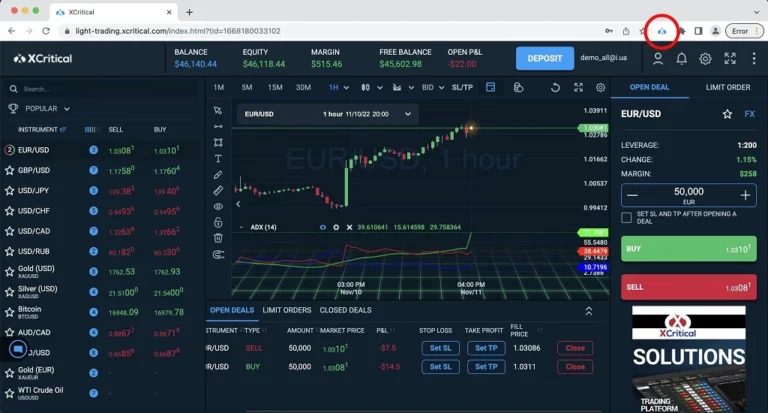Liquidity Providers: the Engine behind Market Efficiency
Understanding Forex Spread Betting: A Beginners Guide
January 8, 202413 Best AI Chatbots in 2024: ChatGPT, Gemini & More Tested
April 9, 2024Liquidity Providers: the Engine behind Market Efficiency
Content
Their proficiency in navigating the complexities of financial markets allows them to maintain a balanced portfolio while fulfilling their role as providers of liquidity. In the ever-evolving landscape of financial markets, liquidity provision plays a pivotal role. As we delve into the future, it becomes crucial to assess the trajectory of liquidity providers and their impact on market dynamics. This section explores various perspectives on the https://www.xcritical.com/ future of liquidity provision, drawing insights from practitioners, academics, and policymakers. A key characteristic of core liquidity providers is that they continually provide liquidity in all market conditions—not just when they find it advantageous to buy or sell a security. Entities known as supplementary liquidity providers (SLPs) also work to provide liquidity across financial markets.
Definition of Liquidity Provider
The primary role of an LP is to facilitate uninterrupted trading within the market. They fulfill this by consistently providing buy and sell quotations, allowing traders to execute their orders instantaneously. In the absence of LPs, trading might experience considerable time lags or even gaps. Such disruptions could lead to adverse market conditions, hampering the ability of traders to transact when they want, potentially leading to financial losses. The presence of LPs ensures that the market remains functional and efficient, providing an environment conducive to seamless trading. In the United States, the NYSE liquidity provider vs market maker and American Stock Exchange (AMEX), among others, have designated market makers, formerly known as “specialists”, who act as the official market maker for a given security.
- Understanding the different types of liquidity providers is essential for comprehending the diverse sources of liquidity and the impact they have on market dynamics.
- They maintain vast trading volumes and offer competitive bid and ask prices, creating a robust trading environment for brokers and their clients.
- This results in tighter spreads and improved order execution quality, which ultimately enhances the overall trading experience.
- Accounting liquidity measures the ease with which an individual or company can meet their financial obligations with the liquid assets available to them—the ability to pay off debts as they come due.
- Banks, financial institutions, and trading firms are key players in providing liquidity to different parts of the financial markets.
Liquidity Provider vs Market Maker
Liquidity providers or market makers seek to avoid this by serving as intermediaries in the financial markets. Enhanced liquidity comes with the benefit of lower spreads, the difference between the ask and bid prices of assets in the market. Being able to buy or sell at a more advantageous price and with a lower risk of price slippage effectively means lowering the trading costs for market participants. Core liquidity providers – or market makers, as they are also known – play a critical role in allowing these financial exchanges to function. Today’s markets have a variety of liquidity sources, including banks, financial institutions, and main trading companies (PTFs).
Different Types Of Liquidity Providers
Excluding accounts receivable, as well as inventories and other current assets, it defines liquid assets strictly as cash or cash equivalents. In the example above, the rare book collector’s assets are relatively illiquid and would probably not be worth their full value of $1,000 in a pinch. In investment terms, assessing accounting liquidity means comparing liquid assets to current liabilities, or financial obligations that come due within one year. Accounting liquidity measures the ease with which an individual or company can meet their financial obligations with the liquid assets available to them—the ability to pay off debts as they come due. Brokeree’s Liquidity Bridge is a cutting-edge solution that empowers brokers to efficiently connect and aggregate liquidity from multiple providers. This innovative bridge seamlessly integrates with popular trading platforms like MetaTrader 4 and 5, making the process hassle-free for brokers.
What is a Liquidity Provider? The Role and Importance
By allowing or withholding trades, it exerts a strong influence over the market price of the shares. LPs contribute to reducing transaction costs by continuously offering to buy or sell securities, thereby narrowing the bid-ask spread. With a smaller spread, traders can transact at better prices and lower costs, enhancing their potential profits.
Investment corporations, commercial banks, and sometimes large brokerage firms are examples of liquidity providers.Some brokers fall under this category. Dealing desk brokers are also liquidity providers and offer quotes for currency pairs. Most times, these brokers fill orders by taking the opposite side of the trade.Brokerage firms are connected to all these liquidity providers. So when you place an order, depending on the type of broker, the order is sent to several liquidity providers. By acting as an intermediary between buyers and sellers, liquidity providers make sure that transactions may be completed quickly and effectively. Their presence plays a crucial role in improving overall market stability and lowering volatility.
In the example above, the market for refrigerators in exchange for rare books is so illiquid that it does not exist. Furthermore, Liquidity Providers are essential in absorbing excess supply or demand, stabilising prices and averting sharp swings. They serve as stabilising influences in the market, ensuring that trade activity continues unhindered even in times of extreme volatility. Finally, it’s important to establish relationships with multiple brokers or trading platforms.

By understanding the significance of liquidity providers, traders and investors can make more informed decisions and navigate financial markets with greater confidence. A core liquidity provider is an intermediary that trades significant quantities of assets to help ensure that market participants can consistently buy and sell assets when they wish. Liquidity providers perform important functions in the market such as encouraging price stability, limiting volatility, reducing spreads, and making trading more cost-effective.
With the most liquid forex pairs, you can enjoy tighter spreads and earn a lot of profit from trading often. Cash is the most liquid asset, followed by cash equivalents, which are things like money market accounts, certificates of deposit (CDs), or time deposits. Marketable securities, such as stocks and bonds listed on exchanges, are often very liquid and can be sold quickly via a broker. If markets are not liquid, it becomes difficult to sell or convert assets or securities into cash. You may, for instance, own a very rare and valuable family heirloom appraised at $150,000. However, if there is not a market (i.e., no buyers) for your object, then it is irrelevant since nobody will pay anywhere close to its appraised value—it is very illiquid.
It may even require hiring an auction house to act as a broker and track down potentially interested parties, which will take time and incur costs. There are several ratios that measure accounting liquidity, which differ in how strictly they define liquid assets. Market liquidity refers to the extent to which a market, such as a country’s stock market or a city’s real estate market, allows assets to be bought and sold at stable, transparent prices.
One of the primary drivers behind this is the rising use of automation and technology used by prop firms or Trader-Funded Firms (TFFs). With so many options available in the market, picking the right tools can be overwhelming—researching can be a chore and time-consuming. Being a Liquidity Provider can be a profitable venture, but it requires a substantial capital base due to the high volume of orders placed in the market. They are the oil in the trading machine, enabling smooth operation and helping to maintain a consistent flow of trading activities. Traders should ensure that the platform they select offers high levels of liquidity for their desired asset class.

This guide will explain the role of liquidity providers (LPs) in the financial markets and list brokers with excellent liquidity. These liquid stocks are usually identifiable by their daily volume, which can be in the millions or even hundreds of millions of shares. When a stock has high volume, it means that there are a large number of buyers and sellers in the market, which makes it easier for investors to buy or sell the stock without significantly affecting its price. On the other hand, low-volume stocks may be harder to buy or sell, as there may be fewer market participants and therefore less liquidity.
As a result, if there is no suitable counterparty available at the present moment in time for the current volume, your order will “slip” if the deal is executed at the nearest possible price at this time. However, the transaction will be carried out so quickly that you will not feel the difference between your transaction with the broker’s client and your transaction with the provider. In our last blog, we discussed liquidity and defined it as a measure of market participants’ ability to trade what they want, when they want, at a mutually agreed upon price for a specific quantity. We explained why liquidity is important to risk management and capital development. We also addressed the factors that contribute to a liquid market, including a high number of participants, a high traded volume, and a relatively balanced and deep order book.
Large trading firms serve as market makers across the capital markets, including those for equities, fixed-income securities, and derivatives. When a retail investor buys a security from a trading firm that is acting as principal, the firm fills the order using its own inventory, allowing it to benefit from the bid-ask spread. Some online brokers act as tier 2 liquidity providers and, when you trade on their platforms, you will buy and sell assets directly from and to them. Higher liquidity in the forex market translates to the easy flow of transactions and lower costs of trading. Everyone benefits from high market liquidity as orders are filled no matter how large, prices remain competitive, and the trading cost is reduced. A simple definition of liquidity in finance is how fast you’re able to turn an asset into real cash.
